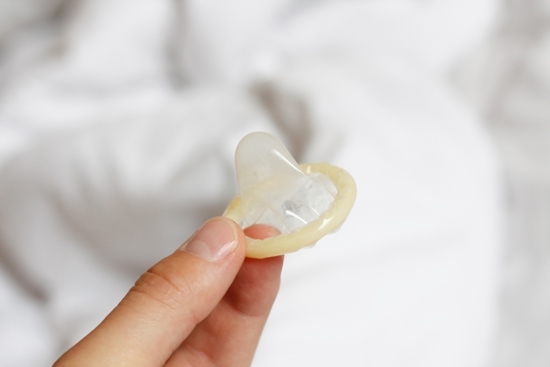Content of the different contraceptives
Contraception with progesterone and oestrogen
Common contraceptive pills, contraceptive patches and vaginal rings contain a combination of the hormones oestrogen and progesterone and are therefore called combination preparations.
The advantage of oestrogen is that you get controlled bleeding every month. In addition, many women who are bothered with menstrual pain and a lot of bleeding find that these conditions are reduced after they have used combination preparations for a while.
The disadvantage of using contraception with oestrogen is that you have a slight increase in the risk of dangerous side effects such as blood clots, strokes and heart attacks.
Contraception with only progesterone
Hormonal coils, contraceptive implants, contraceptive injections, mini pills and progesterone pills contain the hormone progesterone. With these contraceptives, there is no risk of dangerous side effects such as blood clots, strokes or heart attacks, but they often cause bleeding disorders as a side effect.
Hormone-free contraception
Copper IUDs and condoms do not contain hormones, and may therefore be an alternative for those who cannot or do not wish to use hormonal contraceptives. Condoms also protect against sexually transmitted infections.

Order free condoms
Condoms are the only contraceptive that provide protection against both sexually transmitted infections (STIs) and pregnancy. Read about how to use a condom and the reasons why the condom might split.
Protection
All contraceptives provide good protection against pregnancy, but incorrect use can reduce safety. For example, it can be difficult to remember to take the contraceptive pill at the same time every day. This may increase the risk of becoming pregnant.
Long-term contraception such as a coil or contraceptive implant provides the best protection against pregnancy.
Condoms have the highest risk of user error and thus also the lowest safety.
Costs and prescriptions
In Norway, if you are between the ages of 16 and 22, you will receive financial support to cover all or part of the costs of contraceptive pills, contraceptive patches, vaginal rings, contraceptive implants, hormonal coils or copper IUDs.
Contraception support for young people
If you need the contraceptive pill, contraceptive patch, vaginal ring, contraceptive implant or coil and are under the age of 22 years old, you are eligible for financial support to cover all or parts of the cost of contraception.
Coils and contraceptive implants cost the most but can be used over several years. They are therefore the most affordable option in the long run.
All hormonal contraceptives require you to have a prescription to buy them. The prescription can be issued by a doctor, public health nurse or midwife.
Bleeding control
Normal contraceptive pills, contraceptive patches and vaginal rings contain a combination of the hormones oestrogen and progesterone. These provide good bleeding control. If you wish to control or postpone your period, you can use combination preparations such as these.
Side effects
Common side effects
All hormonal contraceptives can cause side effects. Many people experience side effects such as headaches, nausea, acne, reduced sex drive, sore breasts and mood swings.
Bleeding disorders
Hormonal coils, contraceptive implants, contraceptive injections, mini pills and progesterone pills contain the hormone progesterone. These contraceptives often cause bleeding disorders. Bleeding disorders can involve small bleeding, altered menstruation and missed menstruation.
Blood clots
A rare, but serious side effect of combination preparations is blood clots. If you have an increased risk of blood clots, you should not use hormonal contraception containing oestrogen. This also applies if you have other diseases that can be exacerbated by oestrogen, such as some forms of migraine.
It is important to be aware of what may give you an increased risk of developing blood clots, what signs and symptoms to be wary of and what you should do.
In what situations is there an increased risk of blood clots?
- The first year you use a hormonal combination preparation (also if you restart after a break of 4 weeks or more).
- If you are overweight, that is have a body mass index, BMI, over 30 kg/m2.
- If you are older than 35.
- If you have a close family member who has had a blood clot at a relatively young age (e.g. under the age of 50).
- If you have given birth in the last few weeks.
If you smoke and are older than 35, it is recommended that you use a contraceptive method other than a combined hormonal contraceptive.
Duration
- Hormonal coils last for five to six years. The hormonal coil Jaydess lasts for three years.
- Copper IUDs last for five years.
- Contraceptive implants last for three years.
- Contraceptive injections must be given every three months.
- Vaginal rings must be replaced every month.
- Contraceptive patches must be replaced every week.
- Contraceptive pills must be taken every day.
Coils and contraceptive implants can be replaced by a new one when the old one is removed, if you wish to continue with the contraceptive.

Informasjon om ulike prevensjonsmidler
Information about different types of contraception available in Norway, including birth control pills, condoms, sterilization and more.
Illustration: Buecax/Mostphotos